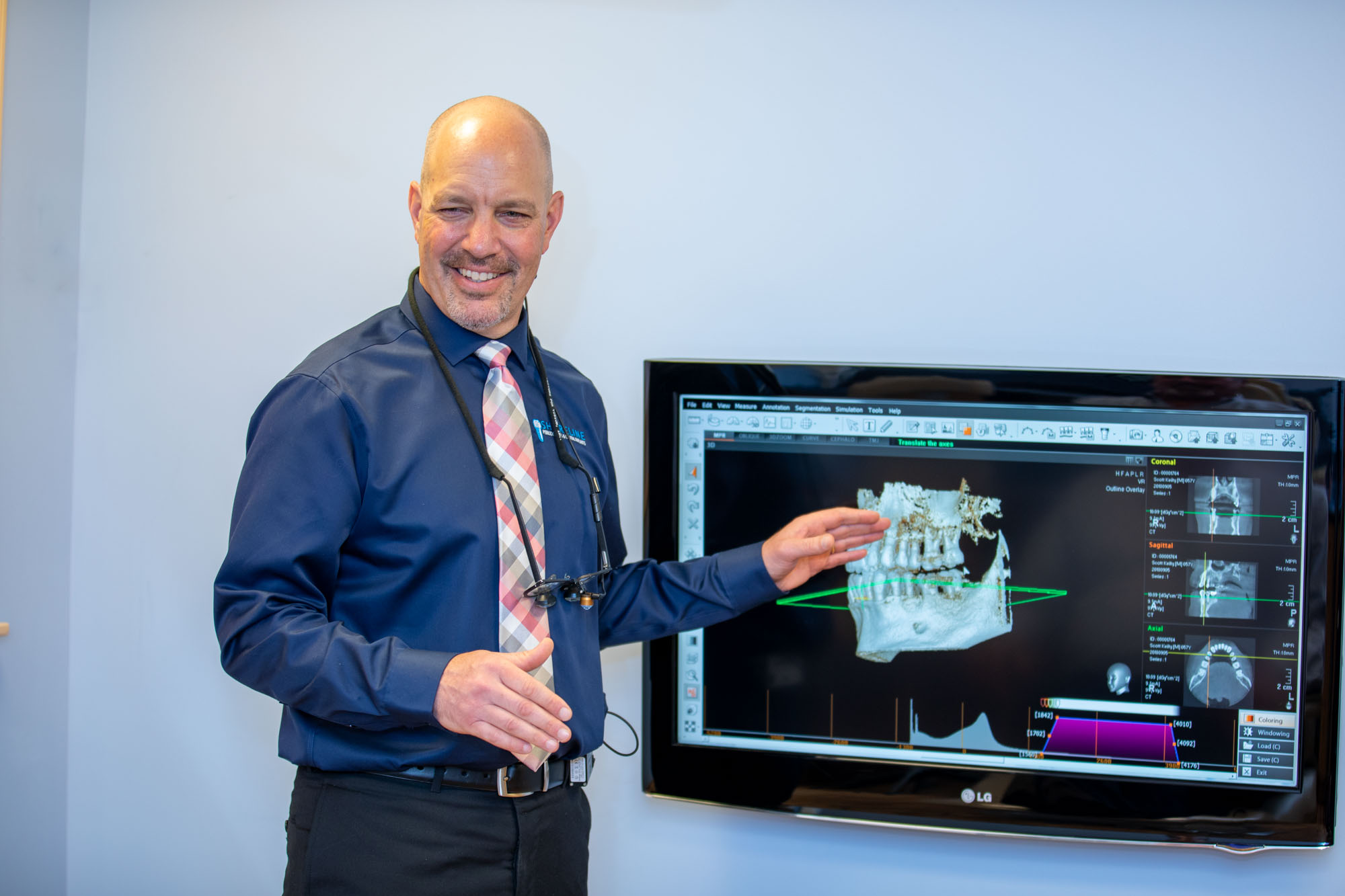Navident
Reliable and Safe Technology
Enjoy A Convenient, Four-Step Treatment Process
Much like a GPS for drivers, our doctors use Navident technology to help discover and plan the most accurate and precise way to place your dental implant. From start to finish, our Navident treatment is a convenient four-step process. After determining if dental implants are right for you, we can begin planning your surgery.
A Modern Take On Dental Implant Surgery
Dental implants have long been considered the ideal tooth replacement option for patients with one or more missing teeth, helping to restore appearance and function back to a compromised smile. Today, with the help of guided placement technology, dental implants can be placed with greater precision and accuracy. Drs. Gregory Toback and Marianne Urbanski are certified to offer the latest guided implant technology, Navident. This 3D guided placement solution allows doctors to create custom guides for each implant placement, considering the precise location, angles and depth of each case for improved results. Using Navident technology, our office creates a dental implant experience that is more comfortable, reliable and safe.
Enjoy A Convenient, Four-Step Treatment Process
Much like a GPS for drivers, our doctors use Navident technology to help discover and plan the most accurate and precise way to place your dental implant. From start to finish, our Navident treatment is a convenient four-step process. After determining if dental implants are right for you, we can begin planning your surgery.
- Creating the Stent
- Taking the CBCT Scan
- Planning the Surgery
- Guiding the Implant Placement

We begin by customizing a stent, or mold, that is placed over your teeth much like a retainer. This chair-side step only takes a few minutes and the stent is worn when taking the CT scan and during surgery to help calibrate the drill.

We attach a “CT Marker” to the custom stent inside your mouth, then you will undergo a fast and painless 3D cone beam CT scan (CBCT). This gives us necessary insight into the structure of your mouth and jaw, including the position of teeth and location of nerves.

The 3D images received from the CBCT are used to virtually plan dental implant surgery, from beginning to end, and used to create a customized dental crown to restore your implant. This guide can easily be modified before or during surgery to improve accuracy and results.

We will place the dental implant by referencing the real-time feedback provided by the virtual software. Thanks to the CBCT and 3D animation of the surgery location provided by Navident, our doctors are guided to the most accurate position and depth within the jaw bone.
Improving Your Implant Experience
We strive to make your dental implant surgery as accurate and precise as possible, and can do so with the aid of modern dental software like Navident technology. Whether you need a single dental implant or a full arch of new teeth, we can help you enjoy a comfortable, minimally invasive, and virtually pain-free experience!
